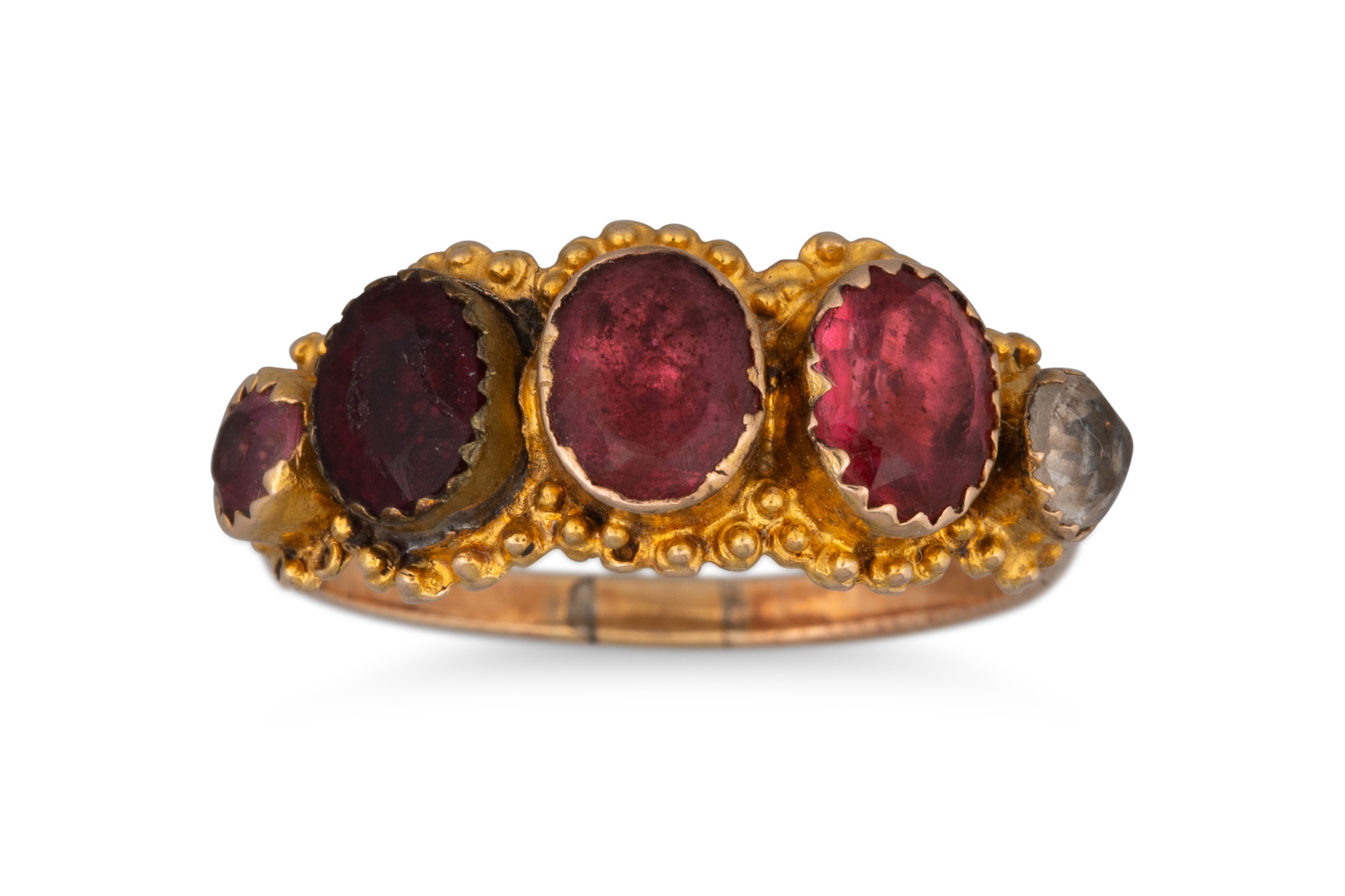Georgian jewels
During the Georgian era spanning just over a hundred years from 1714 – 1830 life changed drastically
11/07/2025 Jewellery & Gems
During the Georgian era spanning just over a hundred years from 1714 – 1830 life changed drastically for the average person, the revolutionization of agriculture and industry meant that wealth was no longer solely due to social position and birth and privately earned wealth was more abundant, as well as this, the transport of goods was becoming easier and faster and as a result fashion items such as jewellery became more accessible to a wider range of people.
Jewellery was no longer just for Royalty and the Aristocracy and was becoming widely available, shops sprung up and jewellery became available for purchase on market stalls and circulating ‘libraries’.
This wider availability is reflected in some of the less expensive materials used; semi-precious stones were employed such as garnet, turquoise, agates, topaz, and pearls, cut steel was often used and one of the first imitation gold materials known as ‘pinchbeck’ was developed by its namesake Christopher Pinchbeck in 1720, foil backed stones were used to improve the appearance of lesser quality gemstones or as a backing on glass to imitate a more precious material.
Much of this jewellery has survived but is rarer than Victorian or 20th Century jewellery, we are pleased to be offering a few surviving pieces from a single vendor collection in our forthcoming auction.
Due to wider availability of jewellery Ladies were known to adorn themselves with multiple rings and often had ‘day and night’ collections, lot 295 a topaz and pearl cluster ring, c.1800 in a rosy gold setting is a super example of daytime ring using a semi-precious foil backed stone, another example of casual wear of the time is lot 302; an agate slice set in a ring which shows off this inexpensive but decorative material at its best.
Diamond rings for the purpose of betrothal became popular in the mid-18th Century, lot 264 is pretty example of a Georgian diamond set ring c. 1770’s and is likely one of the earliest examples of a diamond engagement ring! Keeper rings also became popular during the Georgian era, predating the modern eternity ring, they were used to protect a more expensive diamond ring from falling off the hand, often crafted in semi-precious stones such as garnet or even foil backed glass, lot 296 is a good example of a Georgian keeper ring, set with foil backed glass, attempting to imitate either ruby or garnet.
Sentimental and romantic themes of Love were reflected throughout the era, jewellery containing the hair of a loved one was common, lot 299 is an early 19th century seed pearl portrait pendant containing a lock of hair to the reverse, also in this vain love hearts were popular motifs; lot 300 is an early example of a pinchbeck / gold plated love heart pendant, which may have also contained a lock of hair at some time in its life.
Death was another common theme in jewellery with memorial rings, brooches etc. being commonplace, Lot 292 is a stunning example of a neo classical guilloche enamel brooch c. 1800 with a glazed compartment to the that would have possibly contained a memorial item such as a lock of hair or a portrait.
Whatever your favoured theme is now is your chance to add a genuine Georgian item of jewellery to your collection !



